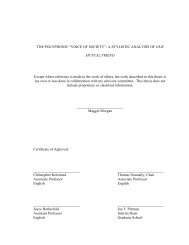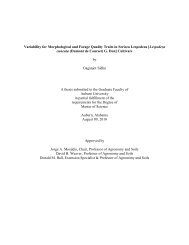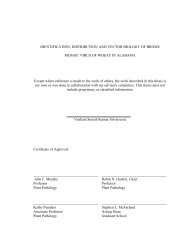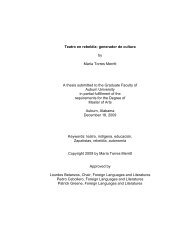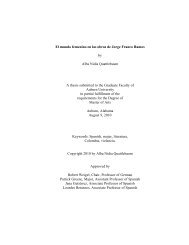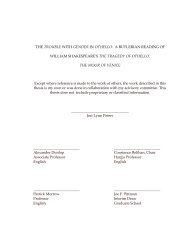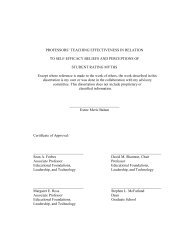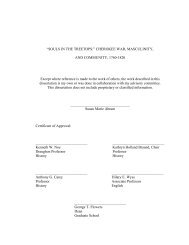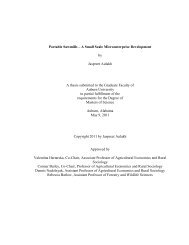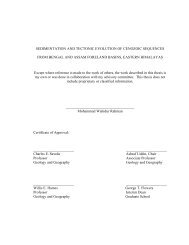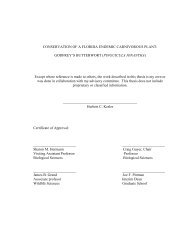Enhanced Polymer Passivation Layer for Wafer Level Chip Scale ...
Enhanced Polymer Passivation Layer for Wafer Level Chip Scale ...
Enhanced Polymer Passivation Layer for Wafer Level Chip Scale ...
You also want an ePaper? Increase the reach of your titles
YUMPU automatically turns print PDFs into web optimized ePapers that Google loves.
(a) (b)<br />
Figure 2.8(a). Metalized photo-paternable silicone bumps and (b). Stencil printed silicon bumps<br />
[48]<br />
Another stress release method was developed by the Fujitsu Co. by <strong>for</strong>ming high copper<br />
posts to increase the gap between the chip and PCB. This chip-sized package is marketed by the<br />
trademark name SuperCSP [46]. Figure 2.9 shows a cross-sectional view and layer structure of<br />
this package. The processes of making the SuperCSP involve several main steps such as the<br />
redistribution traces and metal post <strong>for</strong>ming, encapsulating the wafer, and peeling the film. First<br />
the peripheral pads on the wafer are rearranged in a real array pattern after photolithographic<br />
plating. About 100 µm high metal posts are then fabricated on the wafer. After encapsulating the<br />
entire surface of the wafer, a package having the same size as the chip is fabricated using a<br />
wafer-level packaging method. The connecting portion of copper post and solder ball has a<br />
strong structure that can tolerate the stress because solder balls catch hold of the entire surface of<br />
copper posts, which stick out from the encapsulant and have a mound-like structure [49].<br />
25




